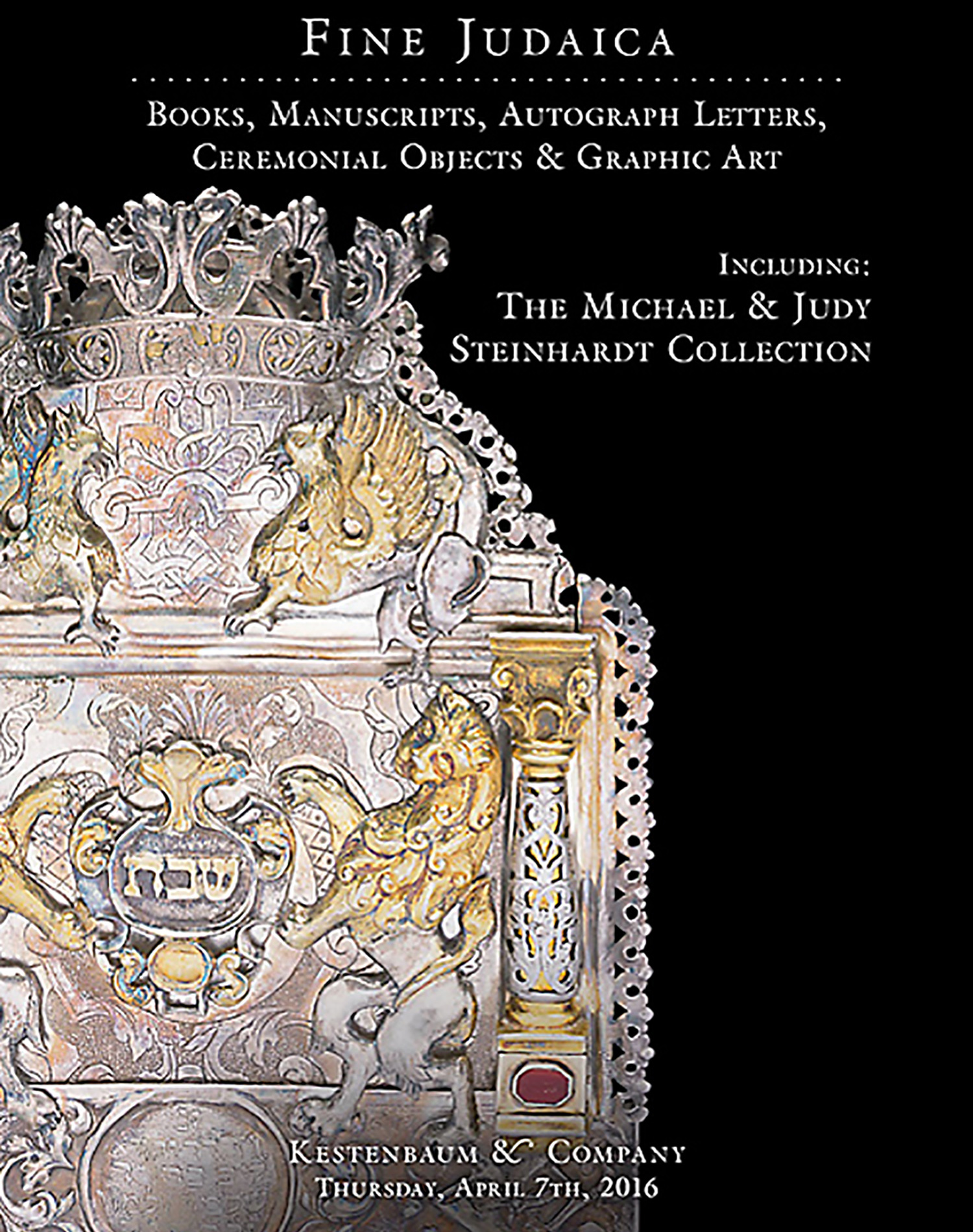Chaim Vital. Sha’ar HaHakdamoth [Kabbalah]

AUCTION 68 |
Thursday, April 07th,
2016 at 1:00
Fine Judaica: Books, Manuscripts, Autograph Letters, Ceremonial Objects and Graphic Art
Lot 107
(ABUHATZEIRA, YA’AKOV).
Chaim Vital. Sha’ar HaHakdamoth [Kabbalah]
Morocco: 19th century
Est: $50,000 - $70,000
<<Autograph manuscript by R. Ya’akov Abuhatzeira, the Abir Ya’akov.
>> R. Ya’akov ibn Masoud Abuhatzeira (1806-80) was one of the greatest sages of North Africa. Renowned for his deep piety, followers streamed to him for his blessings. He was a prolific author both in kabbalah and halacha and many of his works have been published by his descendants in Jerusalem including Doresh Tov, Bigdei HaSerad and Yoru Mishpatecha LeYa’akov. In 1879 R. Ya’akov Abuhatzeira embarked on a pilgrimage to the Holy Land. While passing through the city of Damanhour in Egypt he became ill and soon passed away. He was buried there and his tomb has became a holy site for prayer to this day.
He is the grandfather of the venerated Baba Sali, R. Israel Abuhatzeira (1889–1984).
Sha’ar HaHakdamoth is the first “gate” of eight gates which incorporate Kabbalistic teachings written by R. Chaim Vital that he had received from his master the Ar’i Za’l. They were edited by his son R. Shmuel Vital. The dissemination of the Kabbalistic teachings of the Ar’i follows a complicated and rather convoluted path. R. Chaim Vital revised and edited the Ari’s teachings a number of times, thus accounting for the various versions of the Etz Chaim. The Sha’ar HaHakdamoth is part of the Shemonah She’arim arranged by R. Shmuel Vital in accordance with the contents of each “gate.” Many Kabbalists, especially among the Sephardim, recognize only this recension of the Shemonah She’arim as correct.
The present manuscript contains many textual variances and in various places a fuller and clearer version not noted in the standard edition (published and edited in Jerusalem by R. Yehudah Tzvi Brandwein, author of Ma’alot HaSulam). The layout of this manuscript is also different than the published version. The contents are divided by “shoresh” (root), “geza” (trunk), “choter” (shoot), and “anaf” (branch) - whereas the published version has standard chapters. Thus, the first paragraph in the manuscript explaining how the branches evolve from the roots and the trunk, is not to be found in the published edition at all. Many paragraphs headed in this manuscript with the word “anaf” are headed in the published version with the word “hakdama”. The section in the published version entitled “Derushei Adam Kadmon” (p. 28 in the printed edition) is entitled here as “hachoter habeth” (see bottom of f. 11).
This important manuscript should be further compared to the published version as well as other manuscripts in order to ascertain the most thorough version of this fundamental text.
